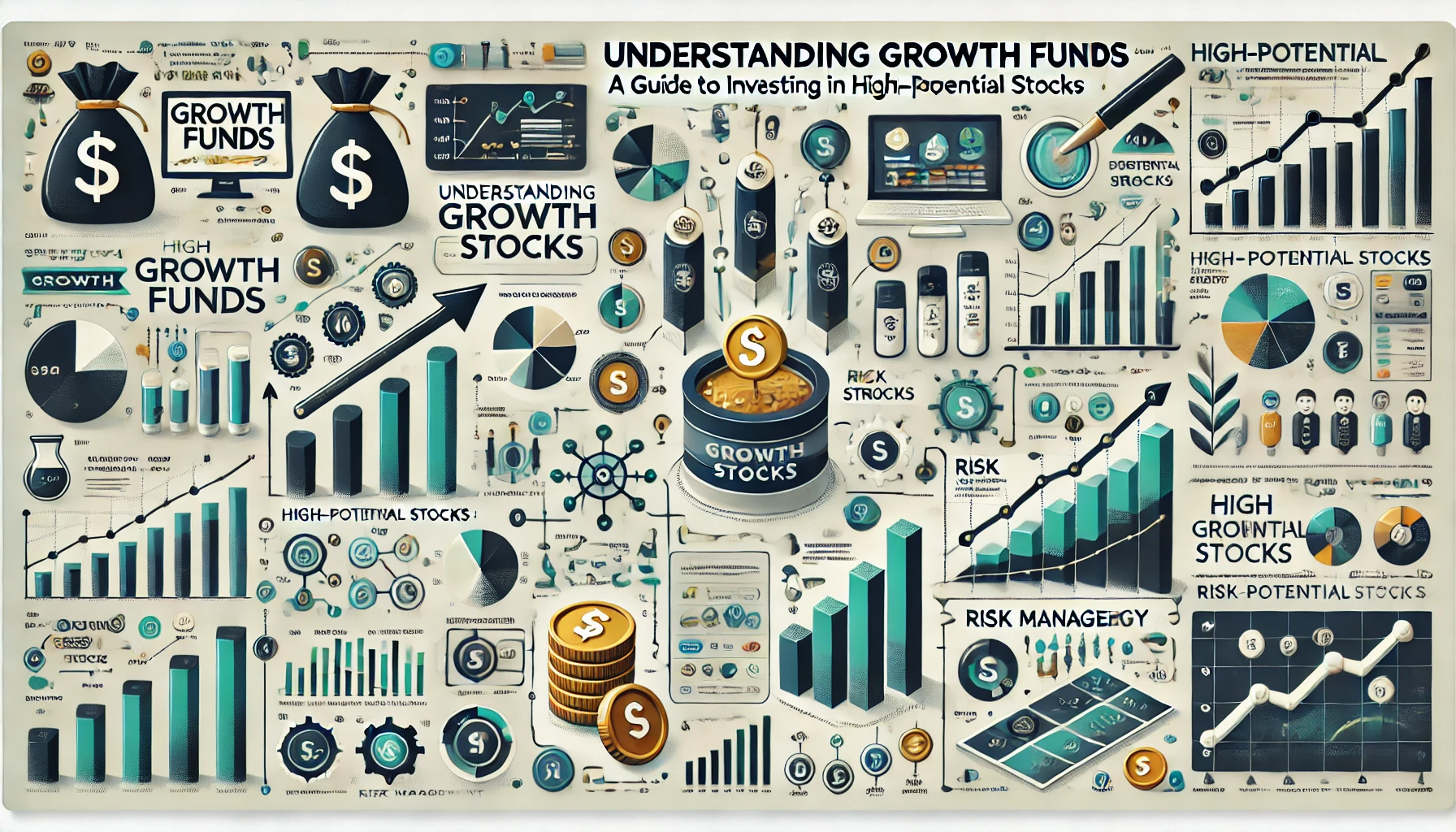Investing in the stock market can be a daunting task, especially for those new to the world of finance. One of the most popular investment vehicles for those seeking substantial returns is growth funds. In this article, we’ll explore what growth funds are, how they work, and why they might be a good fit for your investment portfolio.
What are Growth Funds?
Growth funds are mutual funds or exchange-traded funds (ETFs) that invest primarily in stocks of companies expected to grow at an above-average rate compared to other companies. These companies typically reinvest their earnings into the business to fuel growth, rather than paying dividends to shareholders.
Key Characteristics of Growth Funds
Understanding the core features of growth funds can help you make informed investment decisions. Here are some key characteristics:
- Focus on High Growth Potential: Growth funds target companies with significant potential for capital appreciation.
- Reinvestment of Earnings: Companies in growth funds often reinvest profits into expansion, research, and development.
- Volatility: Growth funds can be more volatile than other types of funds due to their exposure to fast-growing companies.
- Long-term Investment Horizon: These funds are typically suited for investors with a long-term investment outlook.
Benefits of Investing in Growth Funds
Investing in growth funds offers several advantages, especially for those looking to capitalize on the potential of high-growth companies. Here are some of the primary benefits:
- Potential for High Returns: Growth funds have the potential to deliver substantial returns, especially in bull markets.
- Diversification: By investing in a variety of high-potential stocks, growth funds provide diversification, reducing the risk associated with investing in individual stocks.
- Professional Management: Growth funds are managed by experienced portfolio managers who conduct in-depth research and analysis to select the best stocks.
- Access to Emerging Markets: These funds often invest in emerging markets, offering exposure to rapidly growing economies.
Risks Associated with Growth Funds
While growth funds offer attractive benefits, they also come with certain risks that investors should be aware of:
- Market Volatility: Growth stocks can be more susceptible to market fluctuations, leading to higher volatility.
- Economic Sensitivity: The performance of growth funds can be closely tied to economic conditions, which can impact the growth prospects of the underlying companies.
- Higher Valuations: Growth stocks often trade at higher valuations, making them more expensive and potentially overvalued.
- Lack of Dividends: Since growth companies reinvest their earnings, investors may not receive regular dividend income.
How to Choose the Right Growth Fund
Selecting the right growth fund involves careful consideration of various factors. Here are some steps to help you choose the best growth fund for your investment goals:
Evaluate Your Risk Tolerance
Understanding your risk tolerance is crucial when investing in growth funds. These funds can be volatile, so it’s essential to assess how much risk you’re willing to take on.
Analyze Fund Performance
Look at the historical performance of the fund. While past performance is not indicative of future results, it can provide insight into the fund’s track record.
Consider the Expense Ratio
Growth funds often come with higher expense ratios due to active management. Compare the expense ratios of different funds to ensure you’re getting value for your money.
Check the Fund Manager’s Credentials
The experience and track record of the fund manager play a significant role in the fund’s performance. Research the manager’s background and investment approach.
Diversification within the Fund
Ensure the growth fund is well-diversified across different sectors and industries to mitigate risk.
The Future of Growth Funds
As we look to the future, growth funds are poised to remain a popular investment choice for those seeking substantial returns. With the global economy continually evolving, investors must stay informed about emerging trends and sectors that offer significant growth potential.
Emerging Trends in Growth Funds
- Technology and Innovation: The tech sector continues to be a primary driver of growth, with companies in artificial intelligence, biotechnology, and renewable energy leading the way.
- Sustainable Investing: Environmental, social, and governance (ESG) factors are increasingly important, and growth funds are focusing more on companies that prioritize sustainability.
- Global Expansion: As emerging markets develop, growth funds are finding new opportunities in countries with rapidly expanding economies.
Real-Life Examples of Successful Growth Funds
To provide a clearer picture, let’s look at some real-life examples of successful growth funds:
Fidelity Contrafund (FCNTX)
This fund focuses on undervalued growth stocks and has a strong track record of outperforming the market. Managed by Will Danoff, it has delivered consistent returns over the years.
T. Rowe Price Blue Chip Growth Fund (TRBCX)
Investing in large-cap companies with strong growth potential, this fund has been a favorite among investors looking for stability and growth.
Vanguard Growth Index Fund (VIGAX)
A low-cost option, this fund tracks the performance of the CRSP US Large Cap Growth Index, providing broad exposure to growth stocks.
Tips for Investing in Growth Funds
Investing in growth funds can be rewarding, but it’s essential to approach it strategically. Here are some tips to help you make the most of your investment:
- Stay Informed: Keep up-to-date with market trends and economic indicators that can impact growth stocks.
- Diversify Your Portfolio: Don’t put all your eggs in one basket. Diversify your investments to spread risk.
- Monitor Your Investments: Regularly review your portfolio to ensure it aligns with your financial goals and risk tolerance.
- Consult a Financial Advisor: If you’re unsure about which growth funds to invest in, seek advice from a financial advisor.
Conclusion
Growth funds offer an exciting opportunity for investors looking to capitalize on the potential of high-growth companies. While they come with certain risks, the potential rewards can be significant for those with a long-term investment horizon. By understanding the characteristics, benefits, and risks associated with growth funds and following the tips provided, you can make informed decisions that align with your financial goals.
Remember, the key to successful investing is staying informed and making strategic choices based on thorough research and analysis. Happy investing!

